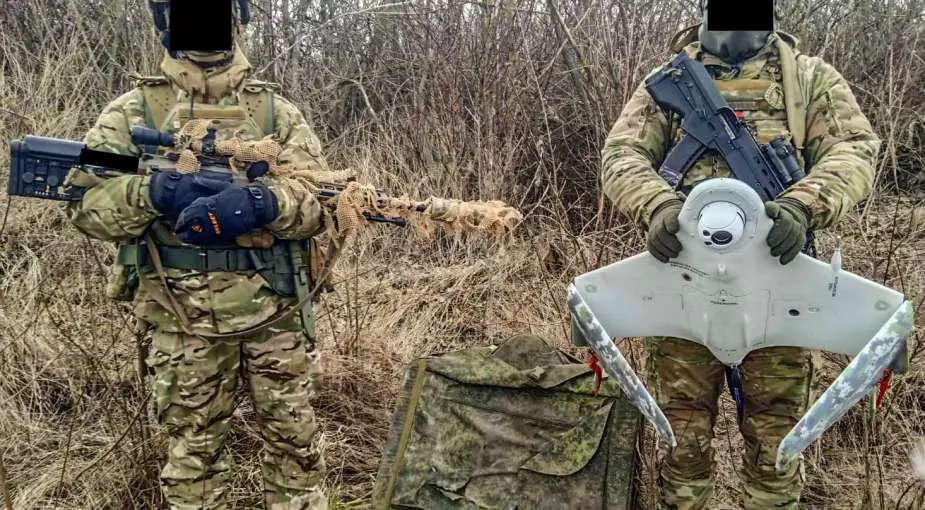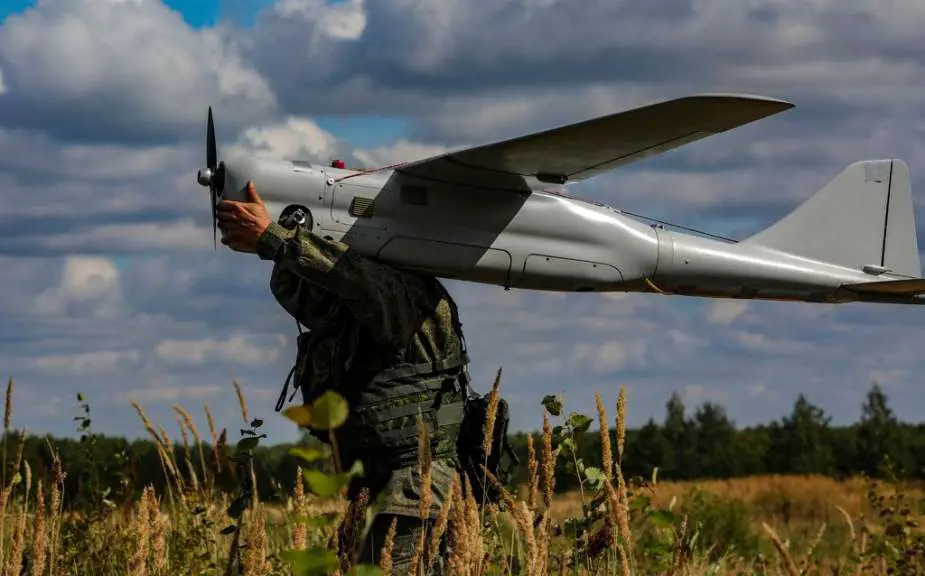Breaking news
Russia develops Lodyr system to defend drone operators from Ukrainian drones.
In a prime example of how warfare continually gives rise to innovative weapon systems, sparking a perpetual cycle of technological responses, Russian engineers have developed a drone designed to shield first-person view (FPV) drone operators from the prying eyes of enemy reconnaissance, EurAsian Times reports, echoing TASS.
Follow Army Recognition on Google News at this link

Russian Eleron-3SV UAV number 38638 captured by Ukrainian soldiers (Picture source: mil.in.ua)
The vulnerability of FPV (First-Person View) drone crews has long been a concern, as they often become high-priority targets for both Ukrainian and Russian forces. Typically, FPV drone pilots rely on supporting personnel to secure their operational environment and manage the drone's hardware. This arrangement exposes the crew to potential enemy detection, leading to instances where Ukraine, in particular, has subjected FPV crews to artillery fire or kamikaze drone attacks.
Enter the Lodyr drone system, which aims to confound "enemy electronic reconnaissance" systems tracking the communication link between the drone and the ground operator, thus determining the latter's position. As reported by TASS, the Lodyr complex, developed by the Center for Integrated Unmanned Solutions, "disrupts enemy electronic reconnaissance systems during the combat deployment of a real FPV crew."
This implies the utilization of an unmanned aerial vehicle (UAV) equipped with Electronic Warfare (EW) capabilities, which can interfere with the radio link between the FPV operator and the kamikaze drone they control. It may also involve mimicking the signals and frequencies specific to the targeted drone system. "In operation, the complex is virtually indistinguishable from a genuine FPV system," according to the report.
One standout feature is its capacity to remain in a specific location for extended periods. Dmitry Kuzyakin of the CIS noted, "(They) are autonomous and can maintain their position for an extended duration, awaiting activation commands." The system employs an FPV drone hibernation tool developed by the center, enabling drones to remain in a dormant state for several weeks before engaging. The TASS report adds that "Lodyr drones essentially serve as decoys under which real FPV crews can safely operate. Furthermore, Lodyr production is cost-effective, with multiple units deployed in the vicinity of one authentic FPV crew."
Kuzyakin emphasized, "Safeguarding the well-being of our combat FPV crews is the top priority of the Central Design Bureau. We are working on innovative tools to confound the enemy on a strategic level. This effort comprises a comprehensive array of measures and technical support." The introduction of combat FPV drones also disrupts an adversary's tactical calculus on the battlefield, compelling them to devise intricate countermeasures and tactics that consume significant planning, manpower, and technical resources. "By inflicting pain upon our adversaries, we force them to intensify their search for countermeasures," he asserted.

The medium-range Orlan-10 UAV has been used operationally by the Russians in Syria and continues to be used in Ukraine (Picture source: Russian MOD)


























